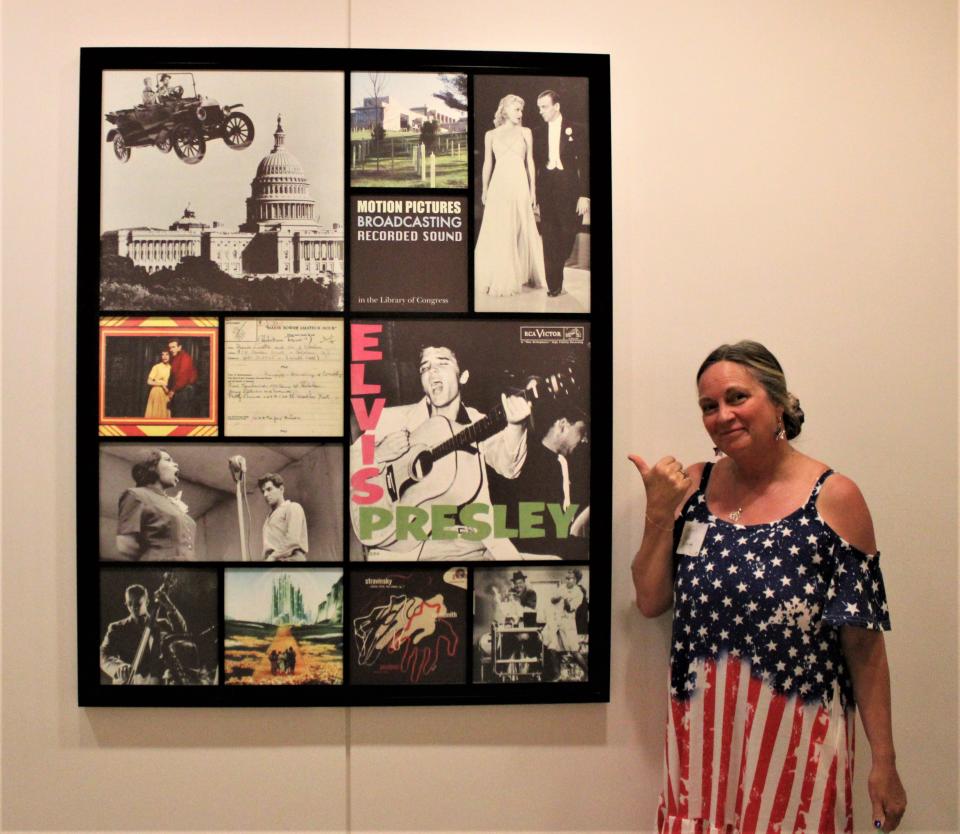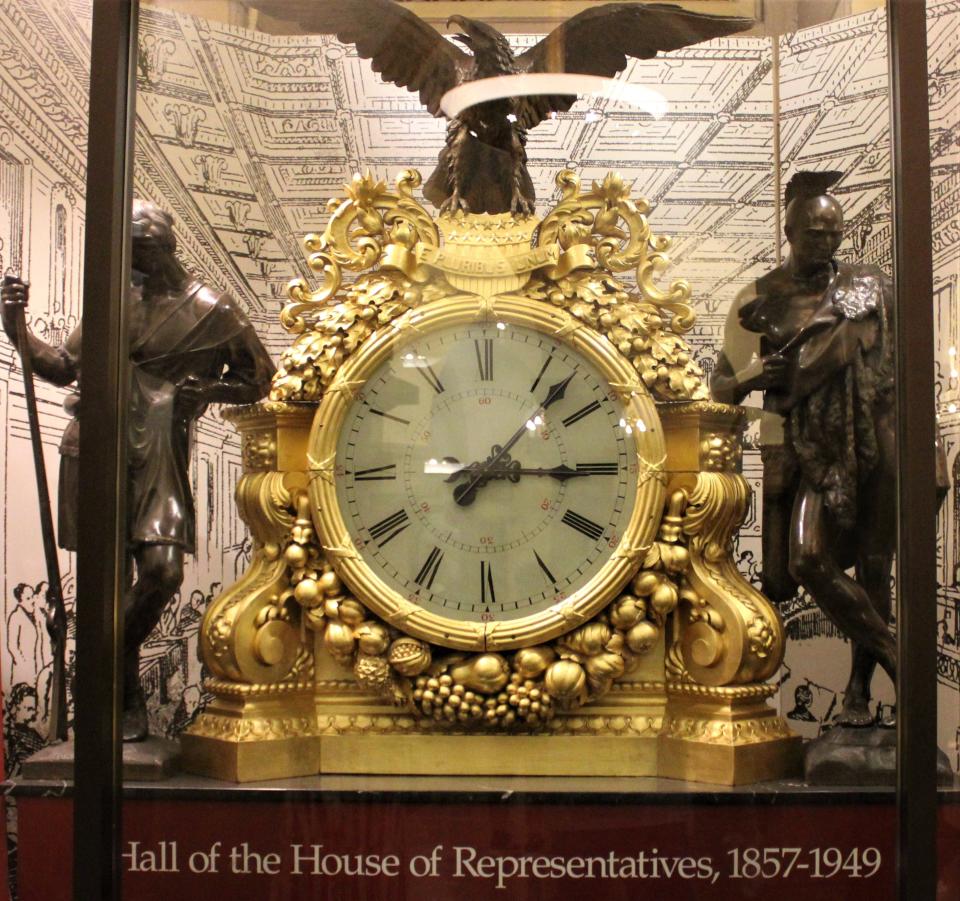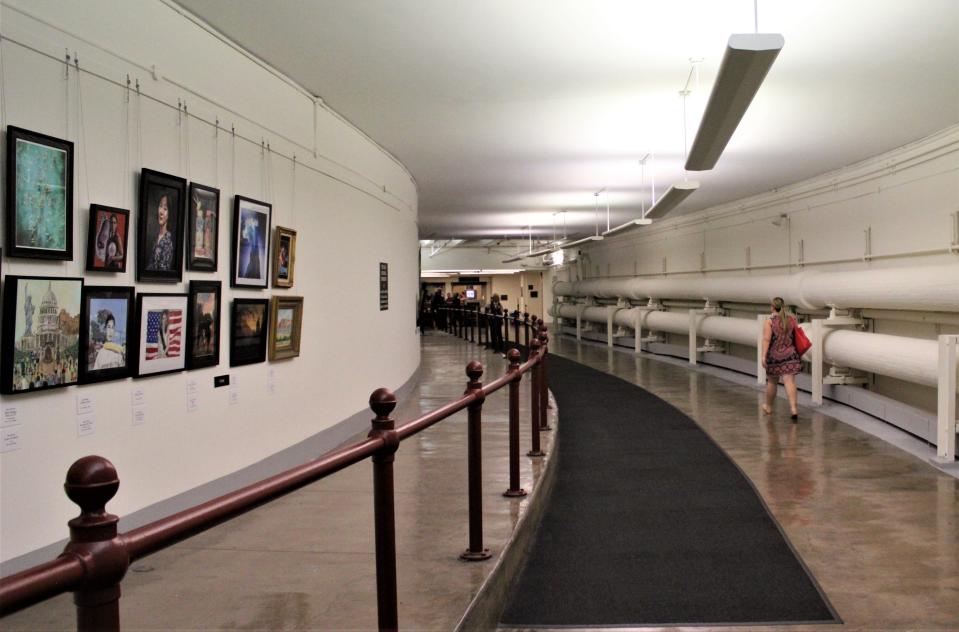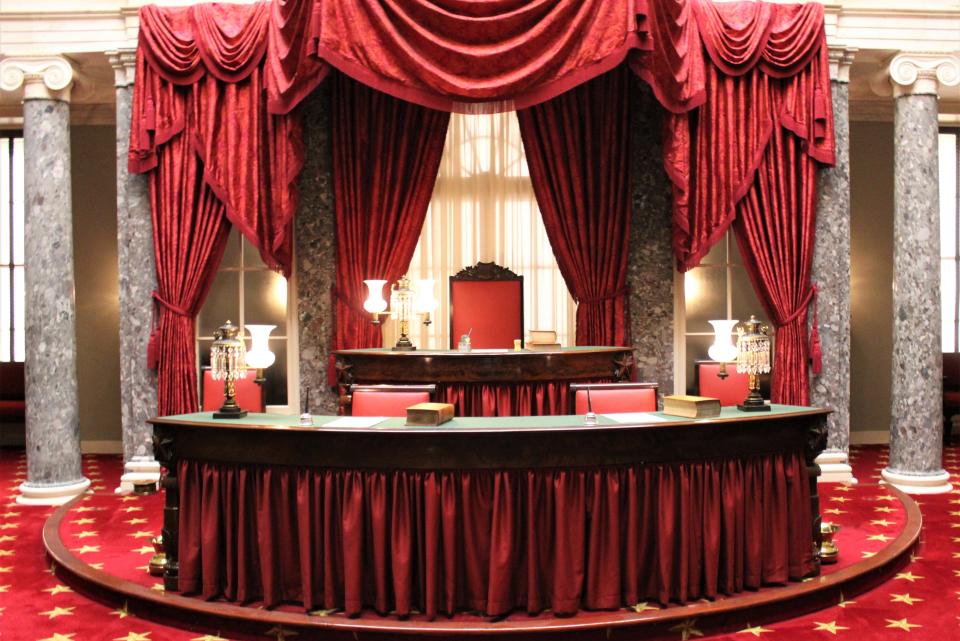Touring Congress was no easy feat, plan ahead and catch these sites
- Oops!Something went wrong.Please try again later.
- Oops!Something went wrong.Please try again later.
- Oops!Something went wrong.Please try again later.
One lesson I learned on my recent travels to Washington D.C., is that when you want to visit a popular location, advanced planning and reservations may be required.
The Nation's Capital does get a lot of looky-loos from all around the globe, and often the place is crammed full of humans jostling each other.
So, Laureen and I had times for this tour, times for that museum and the like, but when it came to touring the United States Congress, I did not want to be mired down with a definite time frame.
Congress, where all those legislatures sit around making up rules and regulations - some we like and some we don’t, is referred to as the People's House.
Being a member of that group known as people, I just assumed you could wander around and check out things when I felt like it.

I was wrong.
And that did not bode well for those folks who believed it on Jan. 6th, 2021 either.
“I’ll just throw some horns on my head, paint my chest red and go speak to my representative,” one shaman may have said. “What could go wrong?”
Many got an all-expense-paid trip to prison, too.
So, prior to our arrival at Congress, I contacted a wonderful legislator from my home state of Nevada, Rep. Mark E. Amodei.
Amodei’s assistant, Glory Duran, made all the arrangements for us. She was awesome, and through numerous communications we nailed down a date and time for a personal tour of the halls of Congress.
There are public tours with about 50 people in each group, but we didn’t want that. I like feeling like I am special. I write travel articles each week for a big muck-muck publication after all.
After spelling my name three times, Glory gave me a date and time for the private tour.
“It’s the best we can do for you,” Glory said.

“That’s great,” I replied. And thus, plans were set in motion, and my research began in earnest.
The history of the actual construction, location, and purpose of the United States Congress building is fascinating.
Way back when, the newly formed Congress passed a bill entitled the ‘Residence Act’ in 1790. It was to firmly plant the seed that the capital of the United States would be where it presently is located. In 1791, President George Washington selected the area from land ceded by Maryland for the District of Columbia - designed to become an entity not directly influenced by belonging to any one individual state.
The capital city was designed by the French engineer, Pierre Charles L’Enfant. L’Enfant also envisioned a building which would house Congress a fair distance from the White House, along an area which would become known as the National Mall.
Construction for the Capitol was to be located on a high geographical location a bit higher than the surrounding areas, on Jenkins Hill.
“It will be a pedestal waiting for a monument,” L’Enfant is quoted as saying, in a rather practiced French accent.
But things didn't turn out so well for this Frenchman. He would not show the designs of the building to anyone.
“Sacre bleu,” he uttered. “I have the concept in my head, and it cannot be shared.”
Rumor has it that L’Enfant’s design closely resembled the Eiffel Tower, destined to be built in 1887 in Paris. He wanted the work in Washington D.C. to be the prototype to ensure the construction on the tower over a hundred years in the future would look good. But that could be just a rumor.

However, L’Enfant was fired from the project.
Then Security of State Thomas Jefferson decided to have a contest to see who would receive the building contract.
“I know,” said Jefferson, “Let’s have a spelling bee.”
Nope, that was what Doc Holiday said in the film Tombstone to Ike Clanton.
Seventeen plans were delivered, and all were pretty disappointing. Finally, Dr. William Thornton, a physician living in Tortola, British West Indies, won the contract on April 5, 1792.
When he received the news, the doctor allegedly exclaimed, “Yes, man! We in di lime tonight!”
President George Washington approved Thornton’s design on July 25th.
Back to the present day, we arrived at Representative Amodei’s office and were greeted by his summer intern, Addison.
The young woman was friendly and knowledgeable as she showed us around the rather large office answering all the questions I could muster about the work Representative Amodei conducted here at the Capitol.
“Is the Representative here?” I asked.
“No,” Addison replied. “Congress is in recess at the moment.
I should have known that. While walking to the Cannon House Office building, where the representatives actually have their offices, I had noticed a couple of senators swinging on the monkey-bars out back.
Turns out, Addison was heading home at the end of August to return to college. “It has been a wonderful experience for me working here. There’s so much to learn and everyone has really treated me great.”
Our tour guide, another lovely young woman and intern, Rosemary, entered the office and off we went to where the real power of the United States resides.

We wandered down to the elevators and took a ride somewhere when suddenly the doors opened, and we were staring at a long tunnel.
It wasn’t like a sewer tunnel, but a rather large path brightly lit with artwork, sketches, quotes from famous folks, and the like. The underground tunnel goes from the representatives’ offices to the capitol.
“Each Representative has a section on the walls and their constituents often send items that may end up here for people to see,” Rosemary explained. “Of course, there are also many other things you can view while walking to the Congress building that reflect the history and greatness of our nation.”
Laureen and I were given visitor passes, went through a metal detector at the beginning of the tunnel, and then followed Rosemary.
I had to run to catch up with the ladies though. A strip search takes a few minutes. Probably shouldn’t have been carrying that bust of Lincoln in my pockets.
“I have personally given about twelve tours and love telling guests about the history of this building and all it means to America.”
Thornton’s design consisted of a large building seemingly built in three sections. The center was topped with a low dome - the rotunda - and on either side were built two similar wings- one for the Senate and the other for the House of Representatives.
The length of the congressional building is an astounding 751 feet, with a width of 350 feet and the tallest section is the center, where the beautifully carved Statue of Freedom soars majestically at 288 feet.
Everything is made of marble - clean, sharp, gorgeous.
There is so much to see and marvel at, that is difficult to include in one column.
Rosemary opened a door and showed us where George Washington laid the cornerstone for the building, emblazoned with the Masonic symbol. She explained so much, a true fount of knowledge, that I forgot half of what she told me.
One of the grandest rooms is the National Statuary Hall. A huge room with over 100 statues of famous Americans represented by states. Each statue is either made of marble or bronze and is intricately crafted.
Helen Keller from Alabama, Junipero Serra from California, Sarah Winnemucca from Nevada, King Kamehameha I from Hawaii, and so many more.
Rosemary took us from this room to that room, from this level to that level, but when we reached the Capitol Rotunda, well that was something almost unbelievable.
The dome measures 96 feet in diameter and towered 180 feet above our heads; it is nothing if not an amazing piece of artwork. It pictures George Washington entering Heaven surrounded by clouds and female figures representing Liberty and Victory.
Along the walls hang huge paintings of the signing of the Declaration of Independence, Landing of Columbus, and other moments in American history.
We made our way to the House of Representatives Chamber and were met by a security officer who took all our possessions.
“No cameras, no phones, no keys,” he said. “Nothing but the clothes on your back.”
“You sound like my mother when I moved out,” I said.
I had to catch up again to Laureen and Rosemary as they entered the gallery.
The chamber is not as large as it appears on television. Each chair and desk are butted up against the next with no room to spare. The room is beautiful, but I did not get the same vibe of awesomeness as I did while touring all the other areas we visited during the tour.
I am not sure what I expected, something grander perhaps since this is where all legislation is laid out to rule this nation of ours.
So many laws, so many regulations, so much arguing, so much grandstanding, happens on a daily basis in this room.
The desks are simple and set in a large semi-circle in the chamber, as if purposely designed to allow each representative to stare down the opposing party across the room.
Perhaps it is the best design for a representative government to sit and gnash out what needs to be done to keep the United States safe and prosperous.
But maybe the desks should be situated so more representatives could easily reach across the aisle to each other and shake hands.
I’m not a politician or an architect though.
We stayed a few minutes and then it was time to depart.
Congress is a must see and a tour by your representative is the best way to learn all there is to understand about the People’s House.
John can be contacted at: beyersbyways@gmail.com
This article originally appeared on Visalia Times-Delta: Touring Congress was no easy feat, plan ahead and catch these sites
